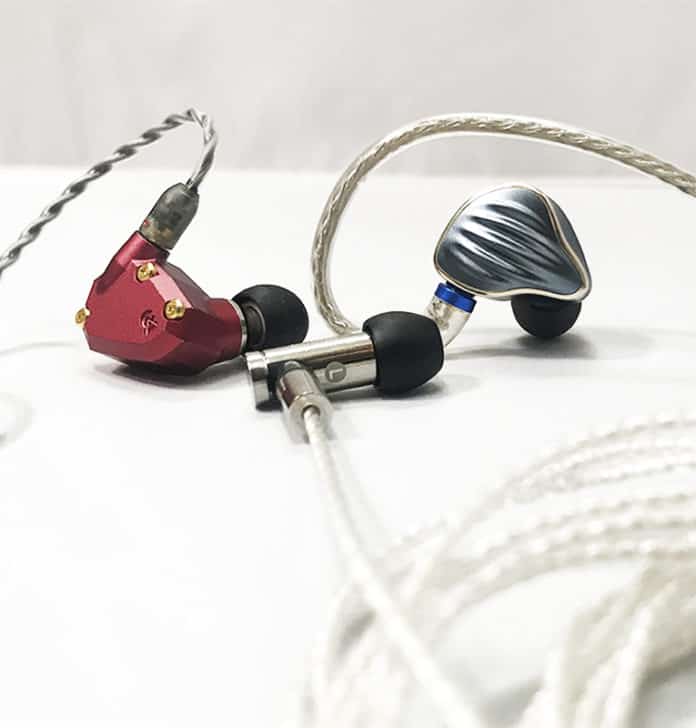This week, someone asked me what is the best IEM for $300 or less. The question began to haunt me because there are a lot of options in this price point. However, after some meditation on the idea, I was able to narrow it down to three IEMs. But out of my favorites, which one is right for you? Let’s take a closer look with this Best IEMs for $300 – Campfire IO vs Final Audio E5000 vs Fiio FH5 Comparison Review.
Campfire IO vs Final Audio E5000 vs Fiio FH5 Comparison Review
Design
Look and Feel
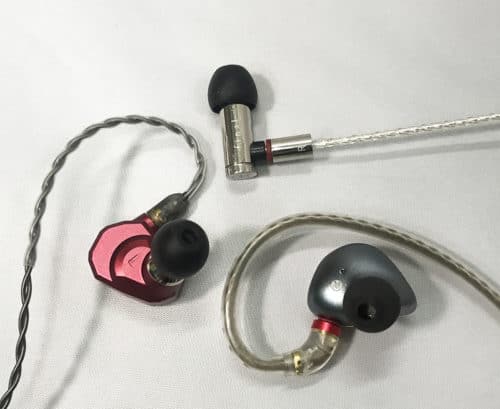
While the Campfire IO, the Final Audio E5000, and the FiiO FH5 all have unique looks, all three are beautiful and classy looking.
On one hand, the IO sports a garnet-red anodized finish and is the most colorful of the three. Its driver housings are much like the other IEM models in the Campfire Audio lineup. Its medium/large size has a geometric, mechanical feeling to its shape. As a result, it contrasts from the flowy look of the FH5 and the simplicity of the E5000. It is made of machined aluminum and has a stainless steel nozzle which flares out from its body. Additionally, it has a sense of weight in the hand and a real feeling of strength. As a result, it feels high quality.
Next, the Final Audio E5000 has a reflective, stainless steel driver housing. Its bullet shape feels minimalistic. With such a small profile, it stands apart from the largeness of the IO and the FH5. Like the IO, it has a sense of weight and sturdiness. However, its small size makes it feel somehow more manageable than the IO and the FH5.
Lastly, the FiiO FH5 feels light in the hand, yet still feels durable. Its body is made of aluminum-magnesium alloy, which contributes to its lightness and strength. As for size, it is similar to the IO. However, rather than a square and geometrical shape, is looks flowy and smooth. It sports a blueish-grayish color with a silver accent, exuding an interesting mixture of maturity and fun.
Comfort and Fit
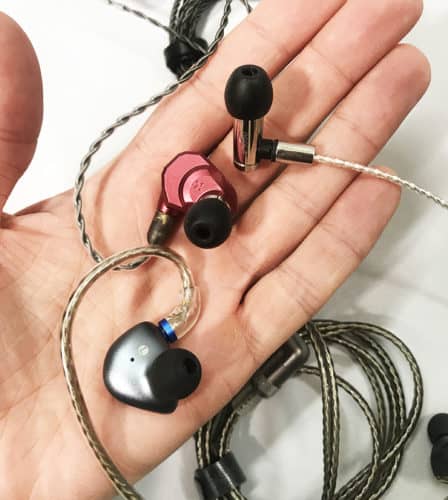
I’ll preface this section by saying I have relatively small ears. That said, I was able to find a solid seal with all three IEMs.
However, the FiiO FH5 fit quickest and easiest in my ears. The shape of its driver housing worked seamlessly with my ears. Additionally, the tightness of the cable’s earhook helped them feel secure. They felt comfortable despite a little bit of coldness upon first putting them in my ear.
Similarly, the Campfire Audio IO had a nice tight earhook which secured them in my ears. However, due to its heavier weight and more angular shape, the fit relied more heavily on the tip’s seal in my ear canal. As a result, it took more effort to find a good fit. That said, once I achieved a nice seal, the IO felt secure and comfortable in my ears. Similar to the FH5, it was a little cold at first, but warmed up after a minute.
Lastly, the Final Audio E5000 fit lightly and comfortably. Similar to the IO, it relied heavily on the fit of the eartip in the ear canal. Its package comes with detachable ear hooks on the cable, and I found the hook-behind-the-ear method of fitting to be best for me. Because it was so lightweight and small, it was super comfortable, and even when the cable was hanging straight down, I didn’t feel gravity trying to pull them out of my ears.
Cables
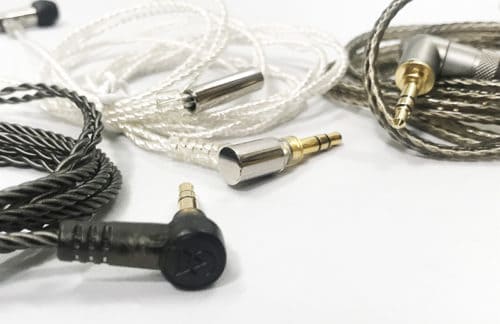
The cables that are included with the Campfire IO, the Final Audio E5000 and the FiiO FH5 are detachable and connect to their IEMs via MMCX connectors. Each are 1.2 m long. Additionally, they all terminate to unbalanced 3.5 mm connectors.
The cable of the Campfire Audio IO is the most manageable of the three. It is a silver-plated copper litz cable with individually insulated conductors. Braided loosely in comparison to the others, it has a pliable, smokey jacket. As a result, it wraps up easily and avoids tangles. Additionally, its connectors are made of a bendable plastic but feel strong and wellmade.
Next, the cable of the FiiO FH5, like the IO, is made of silver-plated copper. Each earphone has two conductors that are braided together, but are insulated in the same transparent, TPU sheath. As a result, the cable feels stiffer than the cable of the IO. Therefore, it wraps a little less easily and neatly. Additionally, unlike the cable of the IO, the separate left and right conductors don’t braide with each other once they meet in the middle. They run alongside each other in a straight line. That said, the connectors of the FH5’s cable are made of aluminum. They feel strong and durable, and have a heftiness that the other two cables don’t quite have.
Lastly, the cable of the Final Audio E5000 is simple and classy looking. It is thinner than both the other cables. Similarly to the FH5, both earphones have two conductors which are braided together and then wrapped together in the same jacket. The jacket is made of PVC. As a result, the cable is a bit rigid in comparison to the IO. That said, once the left and right conductors meet, the two jackets braid together until their termination point at the 3.5 mm connector.
Drivers
The Campfire Audio IO, Final Audio E5000, and FiiO FH5 have different driver designs. The IO has strictly balanced armature, the E5000 has strictly dynamic, and the FH5 uses a hybrid design.
Inside the Campfire Audio IO are two balanced armature drivers. The first is a larger B.A. and is used as a woofer. The other is smaller and is used as a tweeter. Together, they utilize Campfire’s T.A.E.C. (tuned acoustic expansion chamber).
Next, the Final Audio E5000 has just one 6.4 mm dynamic driver. It has a small aperture, which makes it able to capture precise detail according to Final Audio. It works together with an inner acoustic chamber which tunes the sound and provides balanced between clarity and thickness.
Lastly, the FiiO FH5, has one 10 mm dynamic driver dedicated to the low frequencies, one balanced armature driver dedicated to the middle frequencies and two more balanced armature drivers dedicated to the high and ultra high frequencies. Together, they work with FiiO’s S.Turbo acoustic design which filters out resonances and provides a nice big bass according to FiiO.
Sound
Low Frequencies
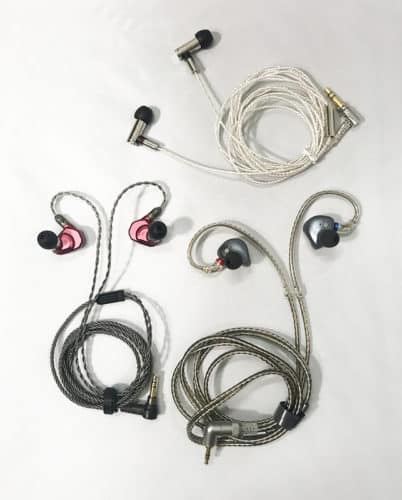
Among the Campfire IO, the Final Audio E5000 and the FiiO FH5, the E5000 has the biggest bass response. It has an emphasized, deep, subbiness that the other IEMs don’t have. As a result, it feels dimensional and long in the lows which provides impact to mixes that use low frequencies for emotional movement. As a result, low-frequency rich instruments feel strong and grounded. They have a sense of thickness and foundational support that has an aesthetically pleasing sense of warmth. That said, the E5000’s low end feels pillowy, whereas the lows of the IO and the FH5 feel punchier and quicker.
Next in low-end level, the FiiO FH5 has a sense of emphasis around what sounded like 60 Hz. This boost, combined with its quick, clean transient response provides a combination of power and clarity. Low-frequency rich instruments there sit a little bit louder in the mix, yet still move freely. As a result, kick drums and basses comes through with energy and grooviness.
Lastly, the Campfire IO has an even low frequency response that doesn’t feel particularly boosted at all. That said, instruments with low frequency transient responses like kick drums and toms have punch and groove. While they sit quieter in the mix for my taste, they maintain a sense of impact and movement.
In practice…
For example, when I was listening to the song Normal by Conor Oberst, each IEM made the naked kick drum at the top of the song feel differently. On one hand, the Final Audio E5000 brought forward the kick drum’s outer head. It had emphasis in the subs, which made the beater part of the kick drum feel sit a little backward in space. That said, the level of the kick in the mix remained a little bit boosted than normal. However, it didn’t feel cloudy, and remained harmonically complex and separated from the bass guitar.
By contrast, listening to the same song with the FiiO FH5, the kick drum had more of an even combination of beater to outer head. Its harmonics felt more realistic, but it still had a nice feeling of subbiness which let the drum feel expressive. The lows felt a little bit punchier and they seemed to have a greater sense of transient movement than the E5000. However, unlike with the IO, with the FH5, the kick sounded a bit louder in the mix than usual.
Finally, when listening to the same song with the Campfire IO, the kick’s beater felt much more present than the E5000 and FH5. And while the low frequencies had energy, they sounded even, the kick felt a little quieter in the mix than with the other two IEMs. That said, the IO’s quick transient response gave a nice sense of spaciousness and musical grooviness to the kick and bass guitar as they moved together.
Middle Frequencies
The middle frequencies of the Campfire IO, the Final Audio E5000 and the FiiO FH5 felt even and harmonically complex. However, their balances and shapes differed from one another.
On one hand, the Campfire IO seemed to have significant emphasis in the high-mids. As a result, while the middle part of the midrange let harmonically intricate instruments like guitars, strings, pianos, and horns feel complex, they sat quieter in the mix. Vocals and the snap of drums felt closer in space.
By comparison, the Final Audio E5000 had a much thicker, warmer midrange, particularly in the low-mids. As a result, bass guitars, thick synths, guitars, and keys come through with a feeling of weight and smoothness. A little cut at the base of the high-mids makes the snaps of drums sit a little further backward in space. However, a boost at in the middle of the high-mids maintains a sense of clarity, presence, and detail to vocals.
The midrange of the FiiO FH5 takes the clarity of the IO and the feeling of weight of the E5000 and marries it into one sound. The low-mids are a little less thick than the E5000, but the middle-mids feel full and complex. Additionally, like the E5000, the FH5 has a little cut at the base of the high-mids. However, it has a boost at the top of the high-mids. As a result, vocals and snappiness feels more present and more realistically placed level-wise in the mix than both the other IEMs.
In practice…
For example, when I was listening to the song Diamond Heart by Lady Gaga, the vocal felt forward in the mix, with lots of clear articulation. The dark synths, rhodes, and guitars felt a bit further back in space. By contrast, the brighter synths sat forward in space, closer to the vocal. Additionally, the snappiness of the snare felt louder in the mix than usual.
On the other hand, when listening to the same song with the Final Audio E5000, the synths, rhodes, and guitars felt warm and gooey underneath the sweet sounding vocal. While the attack of the drums sounded a little bit quieter in the mix than usual, they maintained a sense of energy and thickness.
Lastly, when listening to the same song with the FiiO FH5, the rhodes sounded both clear and thick. The vocal sat naturally in the mix level-wise. It had a great sense of separation between the different synths and guitars, while maintaining a sense of harmonic fullness.
High Frequencies
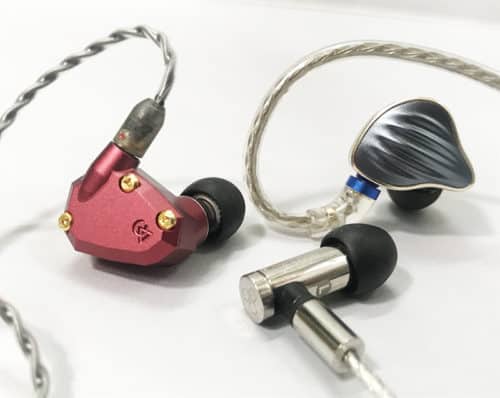
The high frequencies of the Campfire Audio IO, Final Audio E5000, and the FiiO FH5 are beautiful, clear and aesthetically pleasing. However, their shapes differ a bit from each other.
On one hand, the FiiO FH5 has emphasis in the top part of the lower treble and the top part of the upper octave. As a result, it comes through with a sense of articulation and airiness for cymbals, percussion, and vocals. Additionally, it has a cut in the upper area of the upper treble. As a result, the sustain of cymbals is a little bit quieter in the mix than the IO.
On the other hand, the Campfire IO has emphasis across the span of the whole high frequency region. As a result, cymbals and vocal breath sit louder in the mix. Additionally, both come through with articulation, texture and airiness.
The high frequencies of the Final Audio E5000 feels the most different from the other two. It has a little bit emphasis at the top area of the lower treble and another boost at the base of the upper octave. As a result, the highs have a sense of thickness and fullness. They also have a feeling of detail and expression. However, in comparison to the other two IEMs, they feel a little bit lighter in the mix level-wise.
In practice…
For example, when I was listening to the song Inception by McCoy Tyner Trio, I could hear the character of each cymbal with all three IEMs. When I was listening with the Final Audio E5000, I heard a sense of thickness and harmonic complexity with the cymbals. I could hear their full sustai. However, in comparison with the thick low mids, the cymbals felt quieter in the mix than they did with the IO and the FH5.
When I was listening with the FH5, I could hear more of the bell of the cymbal. The attack felt clearer and there was a feeling of crispy specificity that I didn’t quite get with the E5000. The sustains felt a little bit shorter, or at least lighter in the mix compared to the attack. However, the cymbals maintained a sense of harmonic complexity, revealing their individual characters as the drummer moved among them.
Lastly, when I was listening with the Campfire Audio IO, the cymbals sat louder in the mix than they did with the other IEMs. They’re timbres had a similar emphasis on the bell like the FH5, but their sustains felt louder in the mix. They felt slightly less thick than the E5000, but had a pretty sense of detail, air, and fullness.
Soundstage
The Campfire Audio IO, the Fiio FH5 and the Final Audio E5000 all have impressive sound stages for their price points. All three have a feeling of nuance and separation among the three dimensions. However, in addition to their differing feelings of spaciousness, the shape of their frequency responses mold the intricacies of how their soundstages feel.
The brighter, high-mid frequency focused Campfire Audio IO brings instruments with high-mid information closer in space to the listener. Its airiness makes vocals feel tall, almost sitting up above the head. Additional, its quieter low-mid and low end makes it come across in a wider way than the others, with less grounding super solid low end in the middle. As a result, of the three, the IO feels the widest. The feeling of extension in the high frequencies makes it feel extremely tall. That said, its quieter low end makes the reach of low frequency instruments a little bit shorter in the vertical domain.
By comparison, the thicker low and low-mid response of the FiiO FH5 makes the middle feel a bit more solid. But it doesn’t come across as quite so wide as the IO. Additionally, the highs don’t have quite as much feeling of extension, but they contrast dramatically with the deepness of the lows. As a result, the sense of height feels the most spacious with the FH5. Lastly, its feeling of depth comes across in a pretty accurate, true-to-the-mix way, with perhaps a little bit of extra intimacy than usual because of the slight high-mid boost. This creates a nice sense of contrast with instruments that sit further back in space, and helps mixes that utilize depth for emotional impact come through with proper intention.
Lastly, the Final Audio E5000 has the lowest hitting sense of lows in the vertical domain. It’s a little bit less bright, so instruments feel less tall than they do with the IO and the FH5. That said, it has a very strong sense of center, which contrasts strongly from the instruments panned further out. Additionally, to me, it has the most accurate sense of depth because the high-mid rich instruments sit presently, but not overly intimate. They contrast accurately with instruments that sit further back in space. The biggest skew of the depth comes from the low-mid emphasis, which brings bass guitars and synths a little bit closer in space than usual.
In practice…
For example, when I was listening to the song Quizas Quizas Quizas by Pink Martini with the Campfire Audio IO, the shaker, guiro, hand drum, and strings felt super far out to the wide compared to the E5000 and FH5. The solidity of the center was focused around the vocal as opposed to the upright bass. As a result, it felt a little bit less sturdy, but still maintained its sense of contrast. The vocal in the song, which sounded super close in space, felt airy and sweet, and sat high above the head. This contrasted beautifully with the further-off-in-space and vertically lower bass.
By comparison, when I was listening to the same song with the Fiio FH5, the upright bass’s higher level helped to solidify it more strongly in the center than the IO. It contrasted in this way with the panned shaker, guiro, and strings. However, compared to the IO hose instruments felt a little bit less wide. The sense of height had lots of nuance, with the percussion contrasting dramatically from the lows of the upright. The vocal, piano, and strings sat a little bit underneath the percussion, and the classical guitar a little bit below them still. The lows reached down deep and the highs reached up high and the other midrangey instruments fell right into place in between them. Lastly, vocal in the song sounded nice and intimate, although less intimate than the IO. In comparison, it sat back just a bit, but contrasted wonderfully with the pizzicato strings and classical guitar.
Lastly, while the Final Audio E5000 had a pretty sense of extension, its quieter high frequencies made the percussion not feel quite as tall. However, its emphasis in the lows provided an extremely powerful sense of extension, deepness, and centered feeling to the bass and mix as a whole. Additionally, the feeling of depth felt wonderfully complex and specific. The vocal felt the most intimate, and it contrasted wonderfully with the far-off pizz strings and classical guitar. In between those two extremes, the other instruments were able to fill in the middle. However, the upright bass did feel closer in space because of its emphasis.
Overview
Overall, the Campfire Audio IO, Fiio FH5, and the Final Audio E5000 are three of the best IEMs in the $300 range. They cater to different ear shapes and sizes, as well as different sound signature preferences. If you have smallish ears that have difficulty finding a fit, your best bet is the FiiO FH5. Additionally, its sound signature felt like the most standard for most people, especially if you listen to pop, hip-hop, folk, indie, or rock music.
If you like a warmer sound signature, you’ll love the E5000. Its fit is easy in the ear, following more of a typical bullet-shape design, as opposed to an IEM design. It has a nice deep bass, so if you like hip-hop, pop, electronic music, or recordings with super brightness that needs taming, you’ll live the E5000.
Lastly, the Campfire IO is going to be for those folks that enjoy specificity and detail in the high frequencies. It will be for those that want to hear the clear difference between strings like in classical music or bluegrass. It has a feeling of character and a really nice wide soundstage to go along with it.
The Campfire Audio IO, FiiO FH5, and Final Audio E5000 are available for the best price here:
MajorHiFi may receive commission through retail offers.
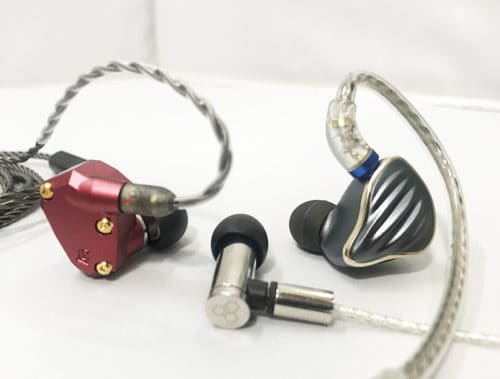
Compare the ranking of various headphones, earbuds and in-ear monitors using our tools.
Discuss this, and much more, over on our forum.
---MAJORHIFI may receive commissions from retail offers.


